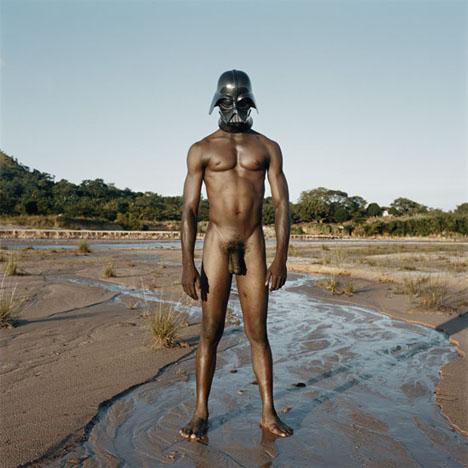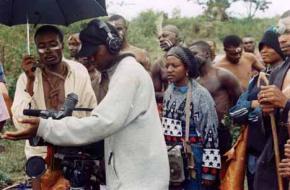Creative Capacities of Developing Countries
In sub-Saharan Africa - with the possible exception of South Africa - the prohibitive cost to produce films, the poor state of cinema houses, the absence of governmental support for filmmaking, and the large offer of foreign films have tied many filmmakers to foreign funding, equipment, expertise, and audiences. Thus, African films have been dependent on overseas financial support which conduces to a type of cinematography not always well-received by African audiences.
On the other hand, video technology brought a real cinematic revolution in Ghana and Nigeria in the late 1980s, allowing video-makers to create a tremendously popular cinema for local audiences: features made on video. In the first half of 2007, more than a thousand films were produced, outnumbering all previous records, according to the National Film and Video Censors Board. Undoubtedly, the emergence of local video industries in Ghana and Nigeria over the past decade represents the most important development in African cinema.
Although video films have, for a long time, been considered second-rate products of the film industry, the mode of production and distribution of digital video films in Nigeria and Ghana is socially, politically and economically significant. They are sold for home viewing on web sites, showing an online dimension for this phenomenon. The digital video films are also broadcast sold via satellite, as well as at small media outlets which serve the diasporic communities in metropolitan cities, such as New York and London. Freed from the requirements for cultural and economic capital imposed by the film medium and encouraged by new media technologies, international and independent video industries based in Ghana and Nigeria have flourished. The proliferation of video films that satisfy the tastes of African viewers counterbalances the production of “art films”, more or less required by outsiders. The videos locally produced and consumed, basically changed this cultural landscape: the video production is an economic response to a craving for images to which a popular audience can relate. Nollywood
Nollywood
Nollywood – the so-called Nigerian film industry – produces more than a thousand feature films annually, shot on micro budgets and sold to audiences on DVDs, VCDs and video cassettes. Prolifically is not only measured by the number of features produced annually, but also how some outstanding directors have adopted various formulas to create new markets and attract more audience to their films. In 1989, some Nigerian video-makers began producing their own video features, first in Yoruba, and later in Igbo, Hausa, and English, creating, what soon came to be a vast and prolific industry. In 2000, 20.000 copies of each video produced were distributed within and outside of the country.
Nollywood is not dominated by a single popular genre. Instead, themes are affected by regional cultures as much as they are by tastes. The only 35mm film in 2006 was The Amazing Grace, screened at the Cannes market. It was subsequently distributed in Nigeria and South Africa through Nu-Metro cinemas, which have shown a renewed interest in screening films at cinemas before they are released on DVD. Another new format that has allowed films to receive theatrical distribution was used by the director Tunde Kelani, who created an ingenious Mobile Cinema project. For a foreign audience, African films are not frequently shown, or they are screened with limited publicity at alternative venues such as film festivals, museums, universities and independent movie theaters.
Nevertheless, Nollywood is also counting on the African Diaspora, particularly in the United Kingdom. To many producers distributing 35mm or high-end digital productions to cinema abroad will hopefully cut out piracy. The film Twisted, was the first film to win a distribution deal with the Odeon cinema chain. Similarly, two other movies, on HD, Mission to Nowhere and Mirror of Beauty, were screened at seven Odeon and Cineworld cinemas in London.
The videos are produced as quickly and inexpensively as possible. The Ghanaian director Socrate Safo’s 2005 production, Amsterdam Diary was shot in six days, but, in the same year, Nigerian films had almost destroyed local production. Currently, many producers prefer to trade Nigerian videos rather than to make their own. Distributors, who once bought the duplication rights from Nigerian producers and copied the videos in Ghana, now travel to Nigeria to buy large quantities of video cassettes and carry them into the country to avoid duplication costs. Of course, a weak system for policing piracy laws means that many Ghanaian distributors do not have any incentive to actually buy the rights to the videos.
The cases of Ghana and Nigeria illustrate how the film and video industry, if properly developed, can be indeed a potential source of employment generation, wealth creation and skill development. Positive steps taken by the Nigerian Government to create the necessary policy environment for the growth of the film industry, are evidences that some developing countries have started benefiting from the dynamism of creative economy and allocated policies to enhance their film industry. welcome to Nollywood
welcome to Nollywood
Also, four directors (Chico Ejiro, Fidelis Duker, Charles Novia and Fred Amata) formed Project Nollywood in mid-2007. With assistance from banks, they plan to produce and distribute movies using the local bank branches across Nigeria as sales outlets. Ghana and Nigeria are also examples of how new production and business models have been emerging as alternatives, and how developing countries can harness their creative capacities for development gains. These countries are incorporating technological tools to create their own networks for the production, distribution and consumption of culture, detached from the regulated sectors of cultural production.
originalmente publicado na revista Vertigo